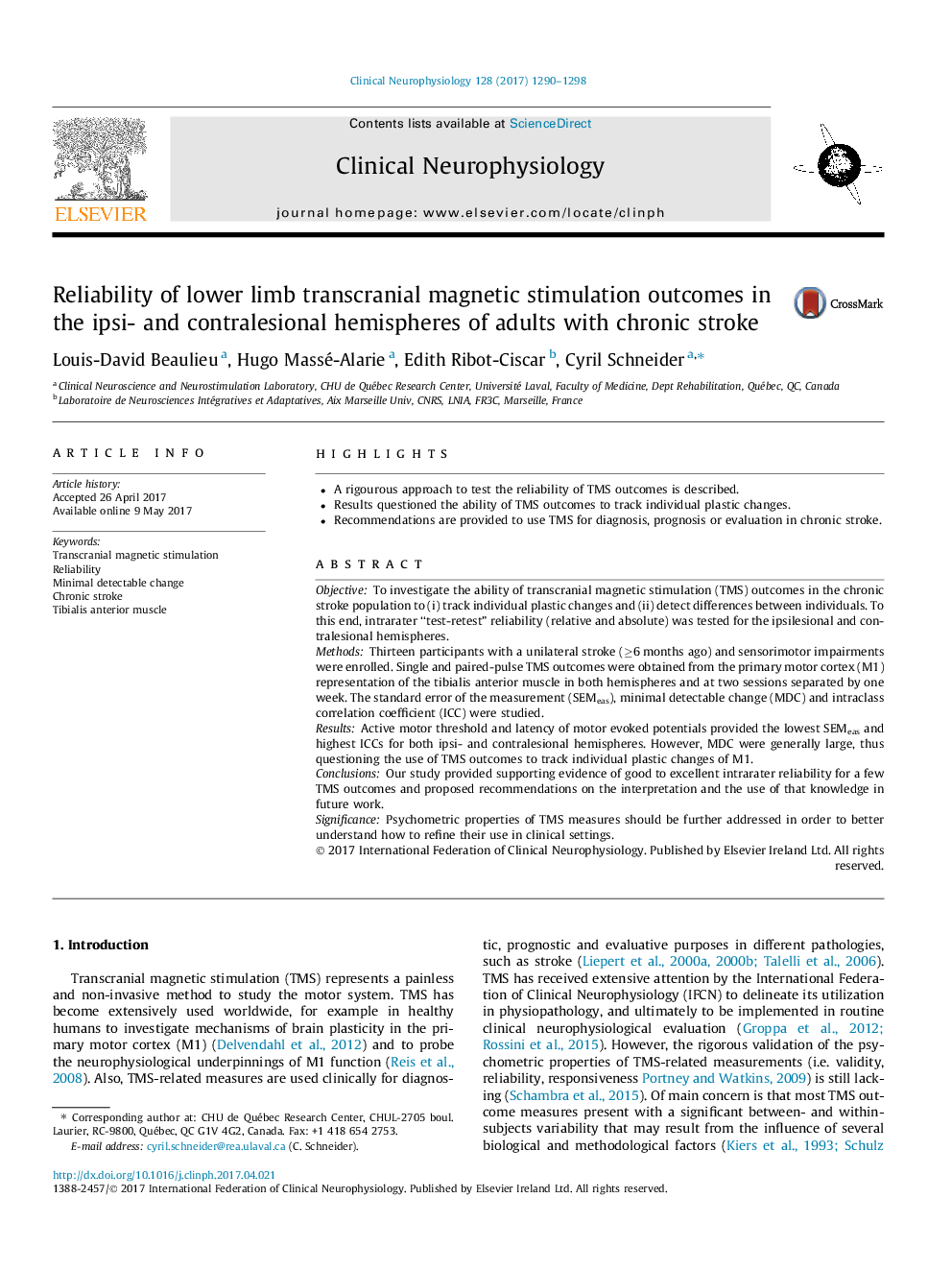| Article ID | Journal | Published Year | Pages | File Type |
|---|---|---|---|---|
| 5627844 | Clinical Neurophysiology | 2017 | 9 Pages |
â¢A rigourous approach to test the reliability of TMS outcomes is described.â¢Results questioned the ability of TMS outcomes to track individual plastic changes.â¢Recommendations are provided to use TMS for diagnosis, prognosis or evaluation in chronic stroke.
ObjectiveTo investigate the ability of transcranial magnetic stimulation (TMS) outcomes in the chronic stroke population to (i) track individual plastic changes and (ii) detect differences between individuals. To this end, intrarater “test-retest” reliability (relative and absolute) was tested for the ipsilesional and contralesional hemispheres.MethodsThirteen participants with a unilateral stroke (â¥6 months ago) and sensorimotor impairments were enrolled. Single and paired-pulse TMS outcomes were obtained from the primary motor cortex (M1) representation of the tibialis anterior muscle in both hemispheres and at two sessions separated by one week. The standard error of the measurement (SEMeas), minimal detectable change (MDC) and intraclass correlation coefficient (ICC) were studied.ResultsActive motor threshold and latency of motor evoked potentials provided the lowest SEMeas and highest ICCs for both ipsi- and contralesional hemispheres. However, MDC were generally large, thus questioning the use of TMS outcomes to track individual plastic changes of M1.ConclusionsOur study provided supporting evidence of good to excellent intrarater reliability for a few TMS outcomes and proposed recommendations on the interpretation and the use of that knowledge in future work.SignificancePsychometric properties of TMS measures should be further addressed in order to better understand how to refine their use in clinical settings.
